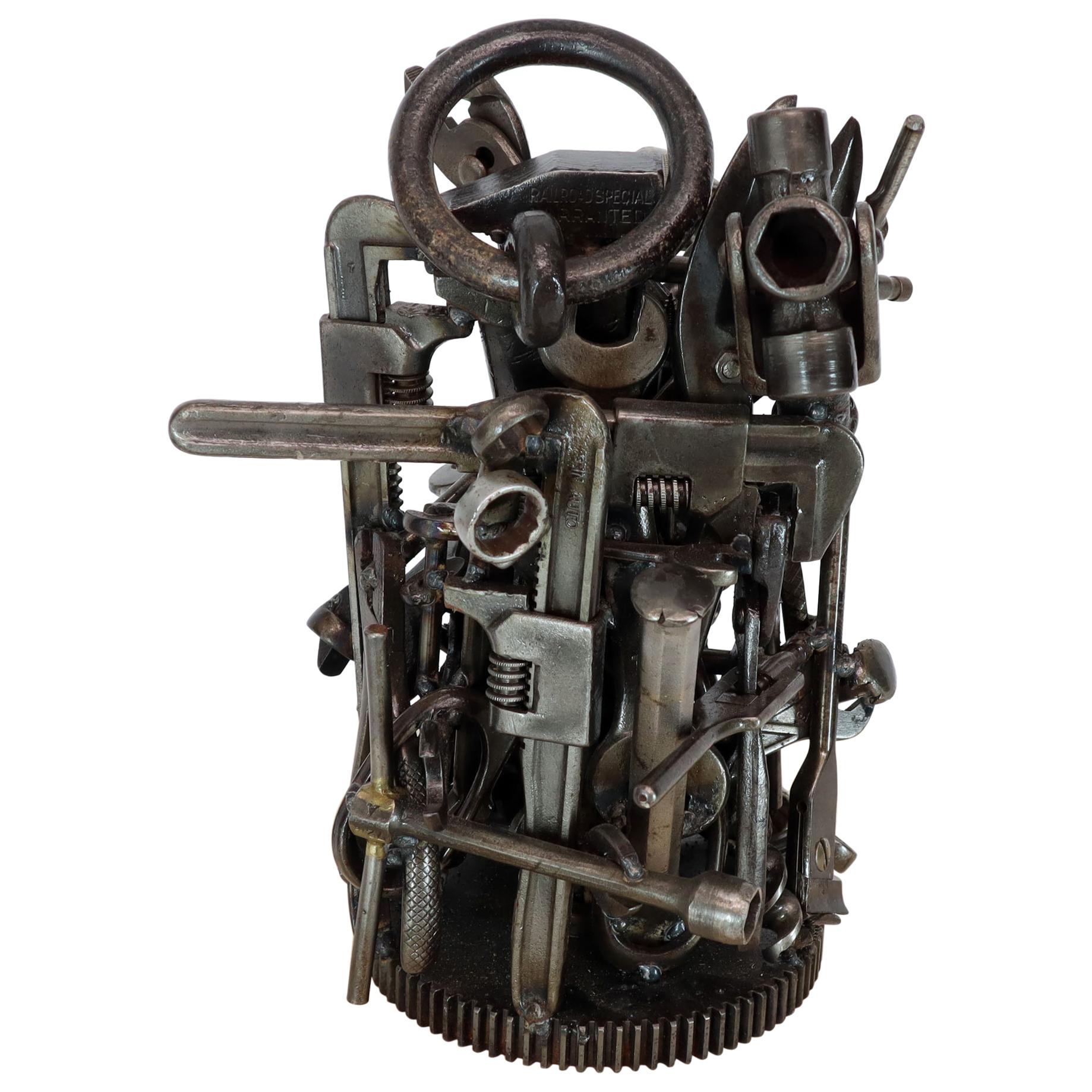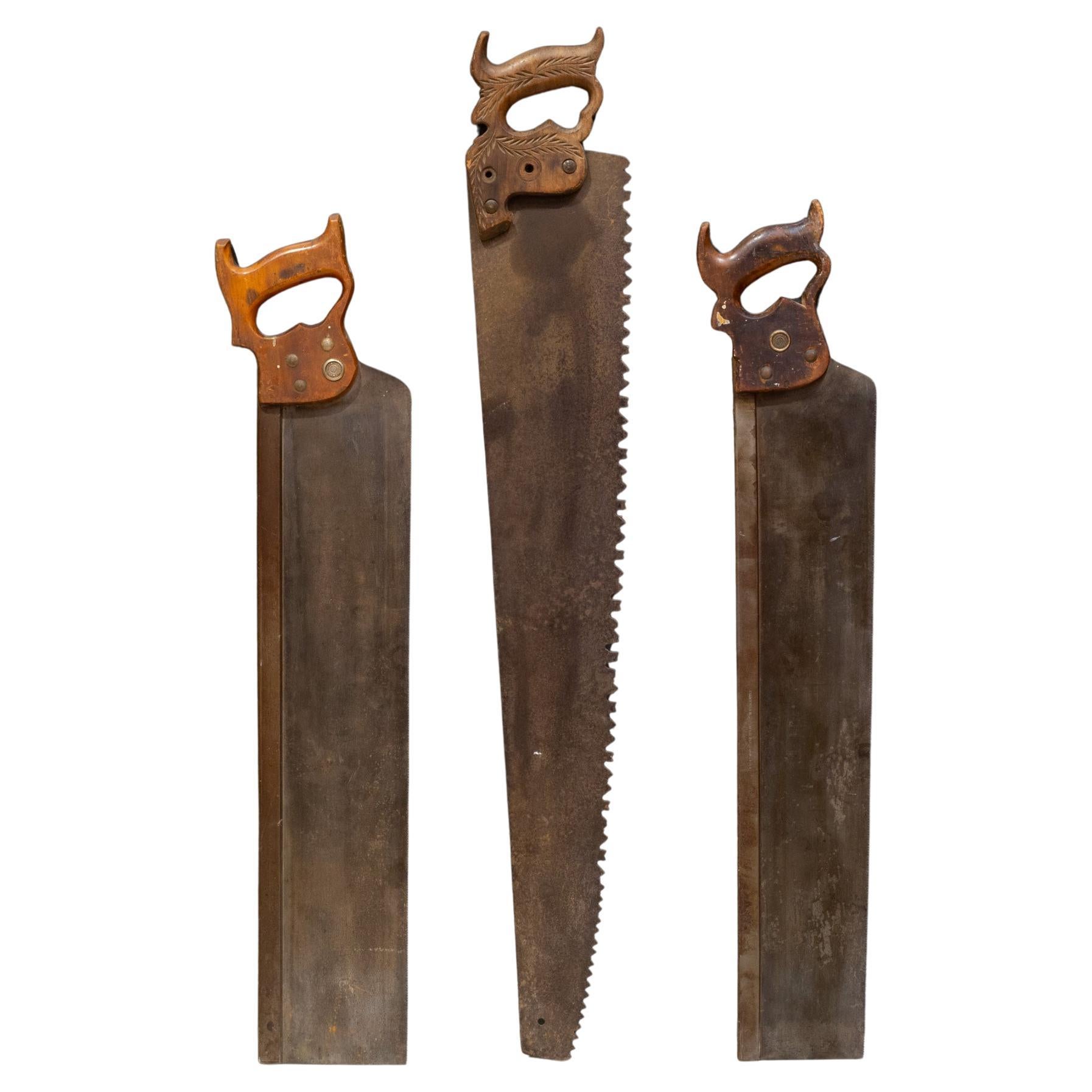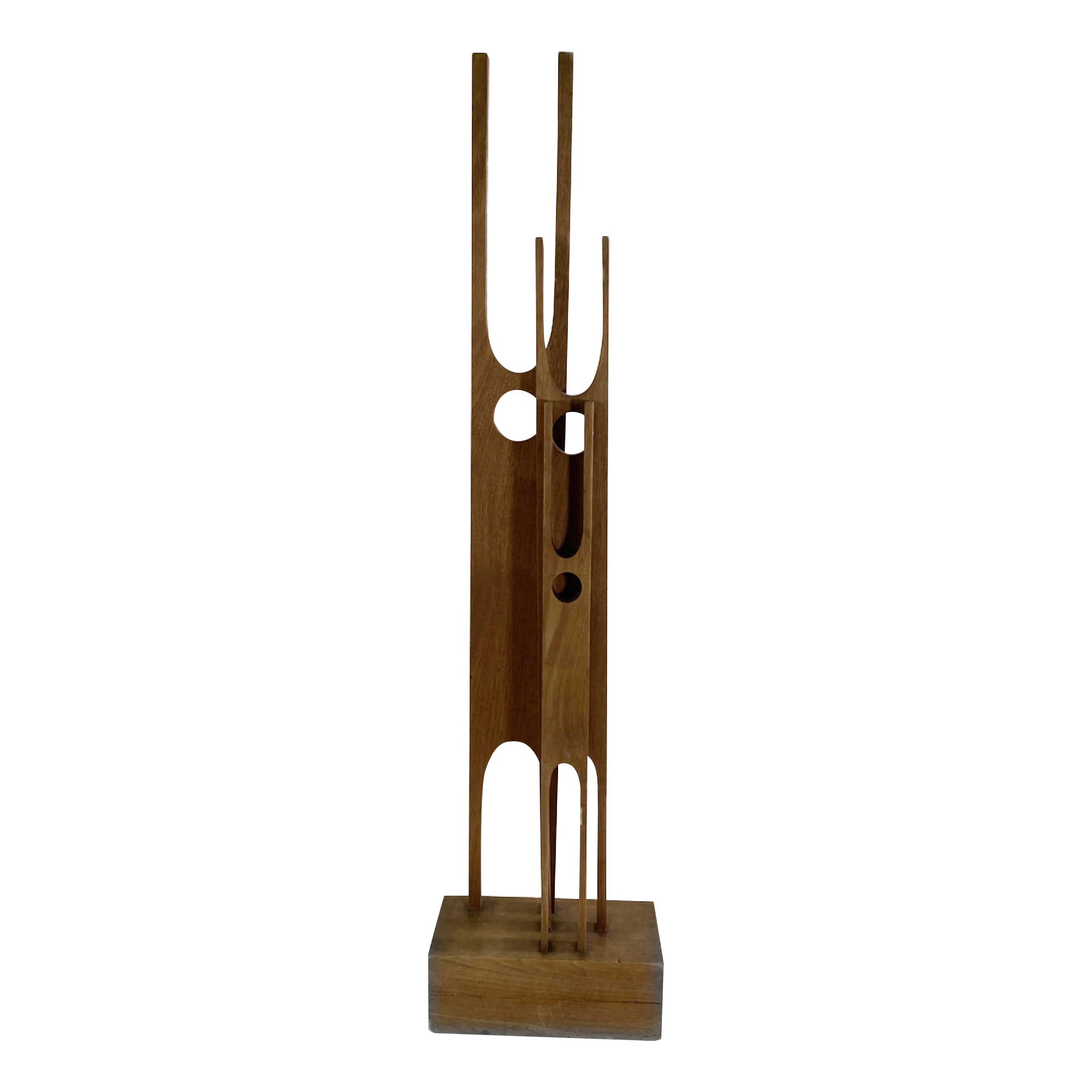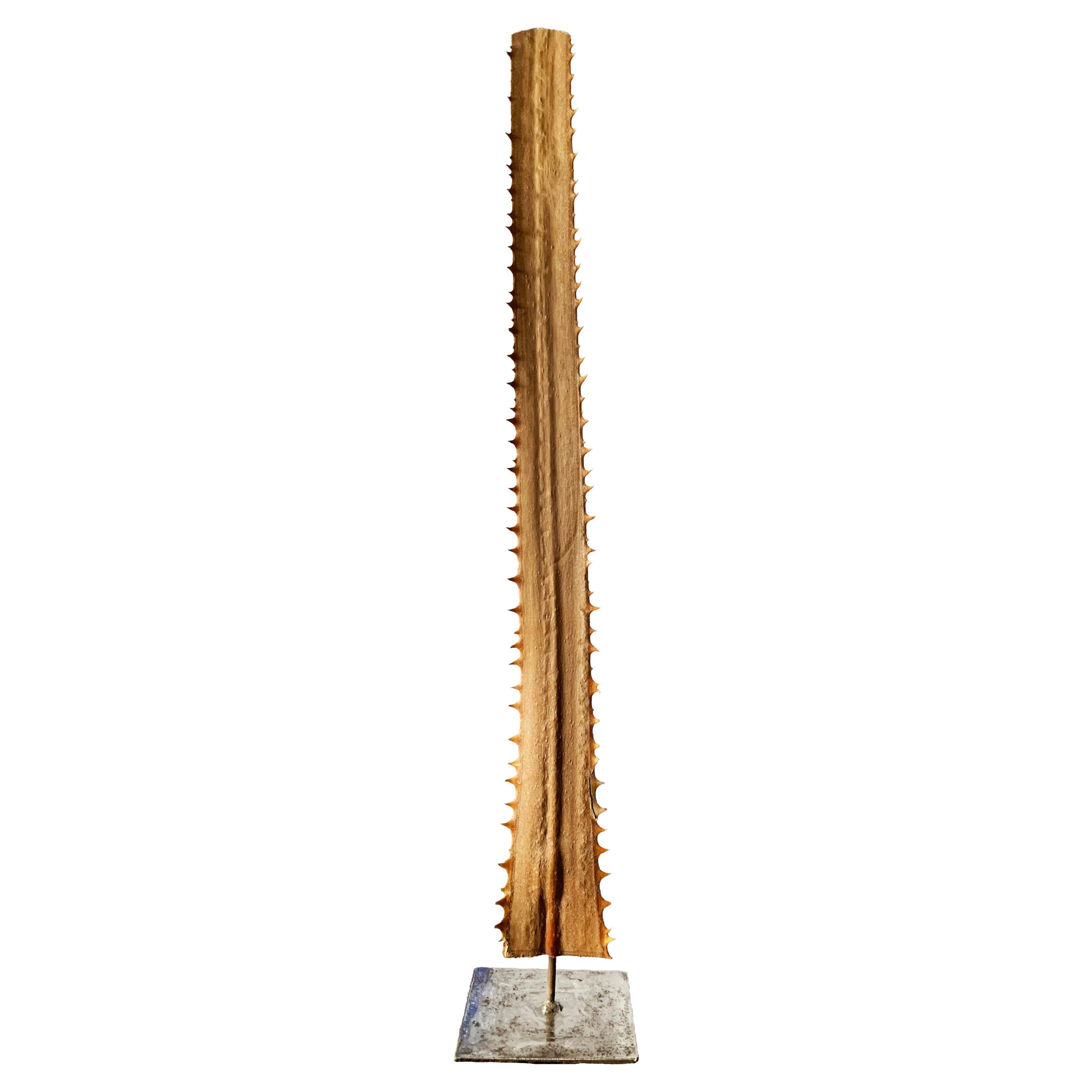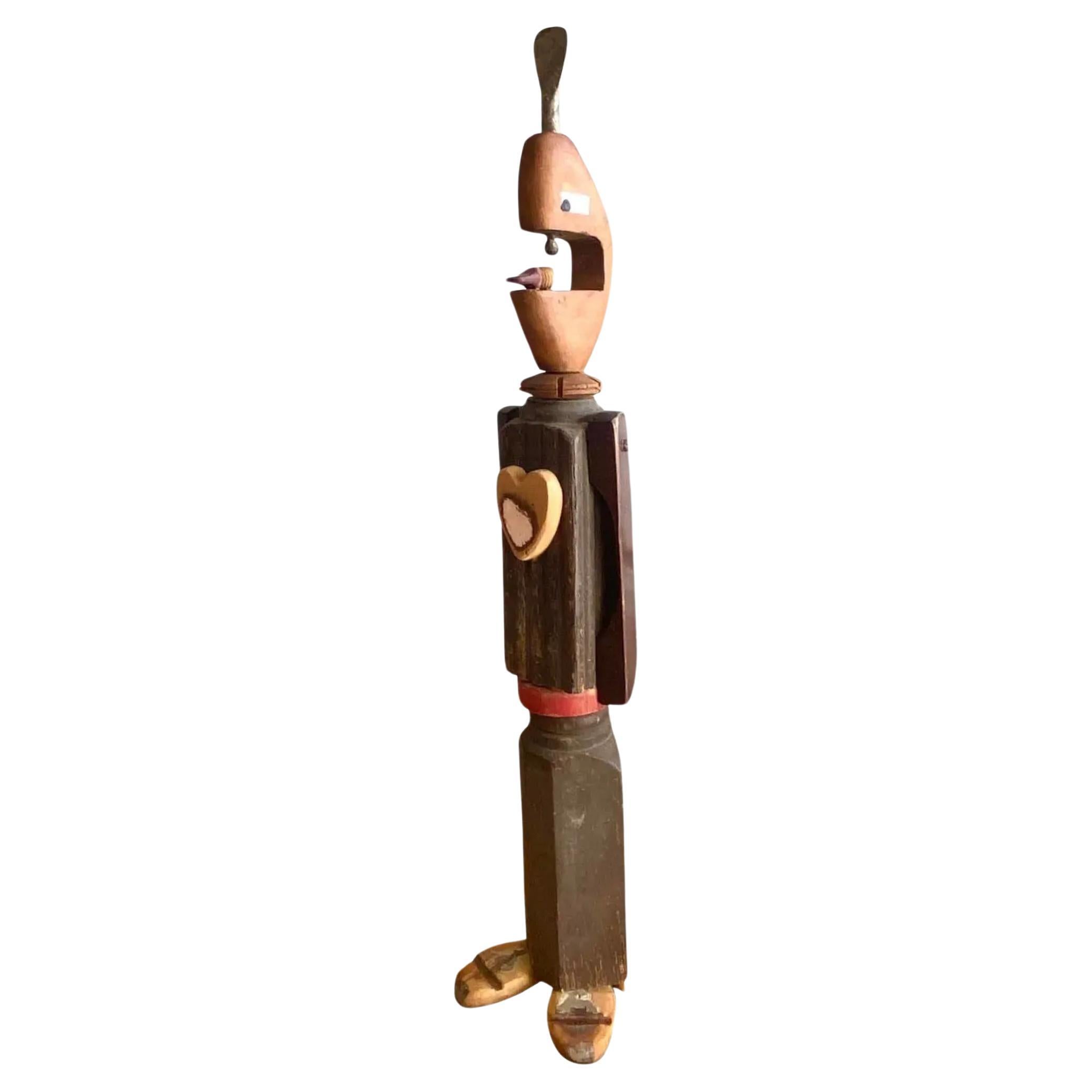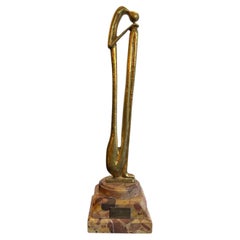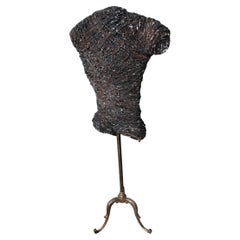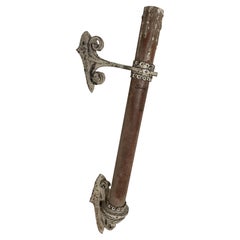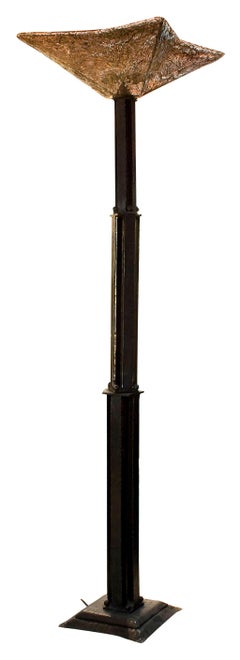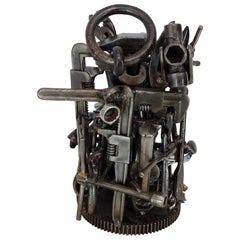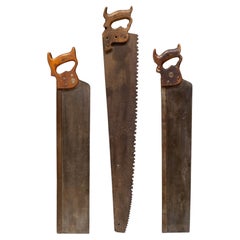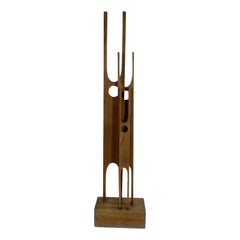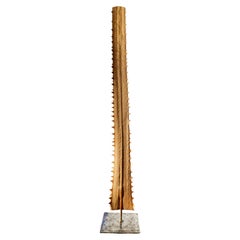Articoli simili a Oversized Saw with (Don't wait for your opportunity, get up and work hard)
Caricamento del video
Vuoi altre immagini o video?
Richiedi altre immagini o video al venditore
1 di 21
Oversized Saw with (Don't wait for your opportunity, get up and work hard)
10.719,40 €
Informazioni sull’articolo
Oversized Saw Advertising Display Sign
With the phrase in Spanish (Don't wait for your opportunity, get up and work hard) / (No esperes tu oportunidad levantate y trabaja duro).
Why are there so many antiques in Argentina?
In the 1880 – 1940 there was a grate wave of immigration encouraged by the periods of war that were taking place.
1st World War took place between 1914 and 1918
2nd World War took place between 1939 and 1945
The immigrants options were New York or Buenos Aires. Tickets were cheap and in Buenos Aires they were welcomed with open arms, as it was a country where everything was still to be done.
Argentina was the country of new opportunities, labour was needed and religious freedom was assured, in many cases the of the family travel first until they were settled and then the rest of the family members join them.
In the immigrant museum “Ellis Island Immigrant Building” in New York you can se the promotional posters of the boats that would take them to a new life.
Between the years 1895 and 1896, Argentina had the highest DGP (gross domestic product) per capita in the world according to the Maddison Historical Statistics index, this situation arose due to the large amount of food being exported to European countries, which were at war.
The Argentinean ships left the port of Buenos Aires with food, but they returned with furniture, clothes and construction elements, (it´s common to see this the old buildings of the historic neighbourhood of San Telmo, the beams with the inscription “Made in England)”, as well as many markets that were built in Buenos Aires, such us the San Telmo Market, whose structure was brought by ship and afterwards assembled in 900 Defensa Street.
With the great influence of European immigrants living in the country, the children of the upper classes travelled to study in France, resulting in the inauguration of “La Maison Argentinienne”, on 27th of June 1928, in the international city of Paris, which hosted many Argentinians that were studying in Frace.
It´s the fourth house to be built after France, Canada and Belgium, being the first Spanish-speaking one. Still in place today (17 Bd Jourdan, 75014, Paris, France). Many of the children of these wealthy families who attended international art exhibitions, museums and art courses abroad, took a keen interest in the European style. This is why Buenos Aires was at the time referred as “The Paris of South America”.
Between the years 1890 and 1920 more than a hundred Palaces were built on Alvear Avenue the most exclusive avenue in Buenos Aires. Today some of these palaces have been transformed into museums, hotels and embassies.
In the year 1936, the Kavanagh building was inaugurated, it was the tallest reinforced concrete building in South America.
During 1994 the American Society of Civil Engineers distinguished it as an “international engineering milestone”, and it´s now considered a World Heritage of Modern Architecture.
At the time was common to hire foreign architects such as Le Corbusier, who visited Buenos Aires/Argentina in 1929 and in 1948 he drew up the blueprints for a house built in La Plata City (which was declared a World Heritage Site).
In 1947, the Hungarian architect Marcelo Breuer designed “Parador Ariston” in the seaside city of Mar del Plata. After an Argentinean student at Harvard University convinced him to come to Argentina. He worked on an urban development project in the Casa Amarilla, area of La Boca.
The Ukrainian architect, Vladimiro Acosta, arrives in Argentina in 1928 and worked as an architect until que moved to Brazil.
Antonio Bonet, a Spanish architect who worked with Le Corbusier in Paris, arrives in Argentina in 1937, where he carried out several architectural works and in 1938 designs the well-known BFK chair.
Andres Kálnay, of Hungarian origin, made around 120 architectural masterpieces, among which the former Munich brewery stands out, he even made the furniture’s design.
The German architect, Walter Gropius, director of the Bauhaus, lived in Argentina, where he wrote articles for “Sur” magazine and founded in Buenos Aires, an architectural firm with Franz Möller, who was also an architect, where he built two houses.
At the same time several famous designers decided to immigrate to Argentina, among them we can find the well-known French designer, Jean-Michel Frank, who arrived in the country in 1940 and also worked for the Rockefeller family.
Special pieces were made, which were sold exclusively in the country, such as the well-known German company “WMF”, who sold their products by catalogue, which were chosen by the ladies of high society in the list of wedding gifts, as well as the pieces designed by Christofle.
The Swiss sculptor Alberto Giacometti, made special pieces for Argentinean mansions.
In 1904 the first Jansen branch outside Paris was established in Buenos Aires, as the Argentinean clientele demanded a large amount of furniture, from the end of the 19th century to the mid-20th century.
In 1970, the brand Rigolleau Argentina made pieces authorised by Lalique.
The brands Maple and Thompson also set up shop in the country.
The French plastic artist, Marcel Duchamp moved to Argentina in 1918-1919.
Glass signed Gallé, Charder, Leverre, Schneider, Muller and other French firms. They were bought in flower shops and were given to ladies with beautiful floral arrangements.
Some furniture manufacturers travelled to international fairs and bough the patterns to produce the furniture in Argentina, such as the furniture firm Englander and Bonta, who bought the patterns ins Italy.
It is worth mentioning that in Argentina we have the largest community of Italians outside of Italy, as it is estimated that 70 percent of the inhabitants have at least one Italian descendant, followed by Spanish immigrants.
The most Important furniture stores in Argentina:
Comte is founded in 1934 (under the direct management of Jean Michel Frank in 1940).
Nordiska (Swedish company established in 1934).
Churba in 1960, a company that brought foreign designers to present their furniture in the country:
Denmark: (Arne Jacobsen, Finn Juhl, Bender Madsen, Ejner Larsen, Poul Kjaerholm, Hans Wegner)
Sweden: (Hans Agne Jakobsson, Gustavsberg)
United States: (Herman Miller)
Finland: (Lisa Johansson, Folke Arstrom, Tapio Wirkkala, Alvar Aalto, Timo Sarpaneva)
Swedish Factory: (Orrefors)
Italy: (Littala, Vico Magistretti, Emma Gismondi, Gae Aulenti, Angelo Mangiarotti, Elio Martinelli, Gianna Celada, Angelo Mangiarotti, Mario Bellini, Carlo Scarpa)
Finland: (Olivia Toikka)
Plata Lappas (Lappas Silver): a goldsmith shop founded in 1887 in Argentina by Alcibiades Lappas of Greek origin.
In 2019, in Argentina took place “the Art Deco world congress”, in which we participated as hosts invited by Geo Darder, founder of the Copperbridge – Foundation, in which prominent people from all over the world attended to learn about Art Deco in Argentina.
Argentina currently has more than 100 Art Deco buildings and another 90 Art Nouveau buildings throughout the city of Buenos Aires.
Argentina is a country that has not been involved in many wars, which is why it has been a refuge for works of art and antiques from different periods of time, unlike European countries. That is way many collectors, museums and antique dealers from all over the world visit it, you should not miss the opportunity to visit this great country.
Laura Guevara Kjuder, architect.
- Dimensioni:Altezza: 202 cm (79,53 in)Larghezza: 37 cm (14,57 in)Profondità: 2,5 cm (0,99 in)
- Stile:Mid-Century moderno (Nello stile di)
- Materiali e tecniche:
- Luogo di origine:
- Periodo:
- Data di produzione:1950
- Condizioni:Usura compatibile con l’età e l’utilizzo.
- Località del venditore:Ciudad Autónoma Buenos Aires, AR
- Numero di riferimento:1stDibs: LU6785245431912
Informazioni sul venditore
5,0
Venditore professionale selezionato
Ogni venditore supera rigorosi standard di autenticità e affidabilità
Fondazione nel 1982
Venditore 1stDibs dal 2022
37 vendite su 1stDibs
Tempo di risposta standard: <1 ora
- SpedizioneRecupero del preventivo…Spedizione da: Ciudad Autónoma Buenos Aires, Argentina
- Politica di reso
Alcune parti di questa pagina sono state tradotte automaticamente. 1stDibs non può garantire che le traduzioni siano corrette. L’inglese è la lingua predefinita del sito.
Garanzia di autenticità
Nell’improbabile caso in cui si verifichi un problema con l’autenticità di un articolo, contattaci entro un anno per ottenere un rimborso completo. DettagliGaranzia di rimborso
Se il tuo articolo non corrisponde alla descrizione, è danneggiato durante il trasporto o non arriva, contattaci entro 7 giorni per un rimborso completo. DettagliAnnullamento entro 24 ore
Hai un periodo di tolleranza di 24 ore per annullare il tuo acquisto, senza necessità di fornire spiegazioni.Venditori professionali selezionati
I nostri venditori di livello internazionale devono aderire a rigorosi standard di servizio e qualità, garantendo l’integrità delle inserzioni.Garanzia miglior prezzo
Se scopri che un venditore ha pubblicato altrove lo stesso articolo a un prezzo più basso, applicheremo lo stesso prezzo.Consegna globale affidabile
La nostra rete di vettori leader del settore offre opzioni di spedizione specializzate in tutto il mondo, inclusa la consegna personalizzata.Altro da questo venditore
Mostra tuttoDesign: Carlos de Lamota, Materiali: Bronzo e marmo, Stile: Art Deco
Design/One: Carlos de Lamota
An He è nato il 13 agosto 1924 nella provincia di San Juan, in Argentina. La sua passione per l'arte è iniziata in tenera età. A 11 anni frequenta il lab...
Categoria
Vintage, Anni 1970, Argentino, Mid-Century moderno, Sculture di animali
Materiali
Marmo, Bronzo
Scultura del torso di un uomo
Scultura
Anno: 1970
Materiale: metallo e bronzo
Dal 1982 siamo specializzati nella vendita di oggetti in stile Art Déco, Art Nouveau e Vintage. Per qualsiasi domanda siamo a vostr...
Categoria
Vintage, Anni 1970, Sconosciuto, Mid-Century moderno, Busti
Materiali
Bronzo, Metallo
25.011 € / articolo
Sconcezza Art Deco, 1930, "Attribuita a Gilbert Poillerat", Francia
Di Gilbert Poillerat
Stile: Art Deco
Materiale: ferro e Wood
Paese: Francia
Dal 1982 siamo specializzati nella vendita di oggetti in stile Art Déco, Art Nouveau e Vintage. Per qualsiasi domanda siamo a v...
Categoria
Vintage, Anni 1930, Francese, Art Déco, Lampade da parete e applique
Materiali
Ferro
Lampada da terra Art Deco 1940, Italiano, Materiali: Ferro e Murano
Lampade da terra
Materiali: ferro e murano
Francia
1930
Se vuoi vivere negli anni d'oro, queste sono le lampade da terra di cui il tuo progetto ha bisogno.
Siamo specializzati nella...
Categoria
Vintage, Anni 1930, Italiano, Art Déco, Lampade da terra
Materiali
Ferro
Scultura , 1920, Art Deco, Segno Lorenzl
Segno:
Lorenz Josef
(Austria, 1892-1950). Scultore, noto per le sue ballerine. Ha lavorato con Goldscheider a Vienna.
Materiali: Bronxe e onice con patina originale
Dal 1982 siamo s...
Categoria
Vintage, Anni 1920, Austriaco, Art Déco, Sculture figurative
Materiali
Onice, Bronzo
Colonna, Art Deco, 1920, Francese
Colonna
Anno: 1920
Paese: Francese
Jugendstil, Art Déco
Dal 1982 siamo specializzati nella vendita di oggetti in stile Art Déco, Art Nouveau e Vintage. Per qualsiasi domanda siamo a...
Categoria
Vintage, Anni 1920, Francese, Art Déco, Piedistalli e colonne
Materiali
Legno
12.505 € / set
Ti potrebbe interessare anche
Strumenti complessi moderni Gruppo Scultura Strumenti saldati
Di Feliciano Béjar
Scultura moderna di attrezzi reali e vecchi saldati insieme. Nello stile di Feliciano Bejar.
Categoria
XX secolo, Americano, Mid-Century moderno, Sculture mobili e cinetiche
Seghe a dorso d'ottone Disston and Sons c.1940-Prezzo per articolo
CIRCA
Prezzo per articolo.
Seghe vintage con manici in legno intagliati a mano, etichette in ottone, viti in ottone e lame in acciaio. Due hanno il retro in ottone.
CREATORE...
Categoria
Inizio XX secolo, Industriale, Attrezzatura sportiva e memorabilia
Materiali
Acciaio
107 € Prezzo promozionale / articolo
20% in meno
Scultura moderna di Wood intagliata a mano
Scultura moderna di Wood intagliata a mano
Categoria
XX secolo, Sconosciuto, Moderno, Sculture astratte
Materiali
Legno
Pesce See One Vegetale
Il pesce spada è stato un simbolo di decorazione molto interessante nelle case e nei luoghi più importanti del Messico. Allo stesso modo, questo meraviglioso pezzo è stato un simbolo...
Categoria
Anni 2010, Esemplari naturali
Materiali
Palma
446 € / set
Scultura contemporanea di oggetti trovati firmata Lisa Lulo
Favolosa scultura di un uomo, frutto di un oggetto trovato. Firmato dall'artista Lisa Iulo. Un brillante assemblaggio di pezzi per creare questo personaggio sorprendente. Acquistata ...
Categoria
Fine XX secolo, Americano, American Craftsman, Sculture figurative
Materiali
Ceramica
Scultura in Metallo di cane Italia 1960 Brutalista
Scultura in Metallo di cane Italia 1960 Brutalista
Categoria
Vintage, 1960s, Italian, Mid-Century moderno, Sculture di animali
Materiali
Metallo
399 € Prezzo promozionale
20% in meno
